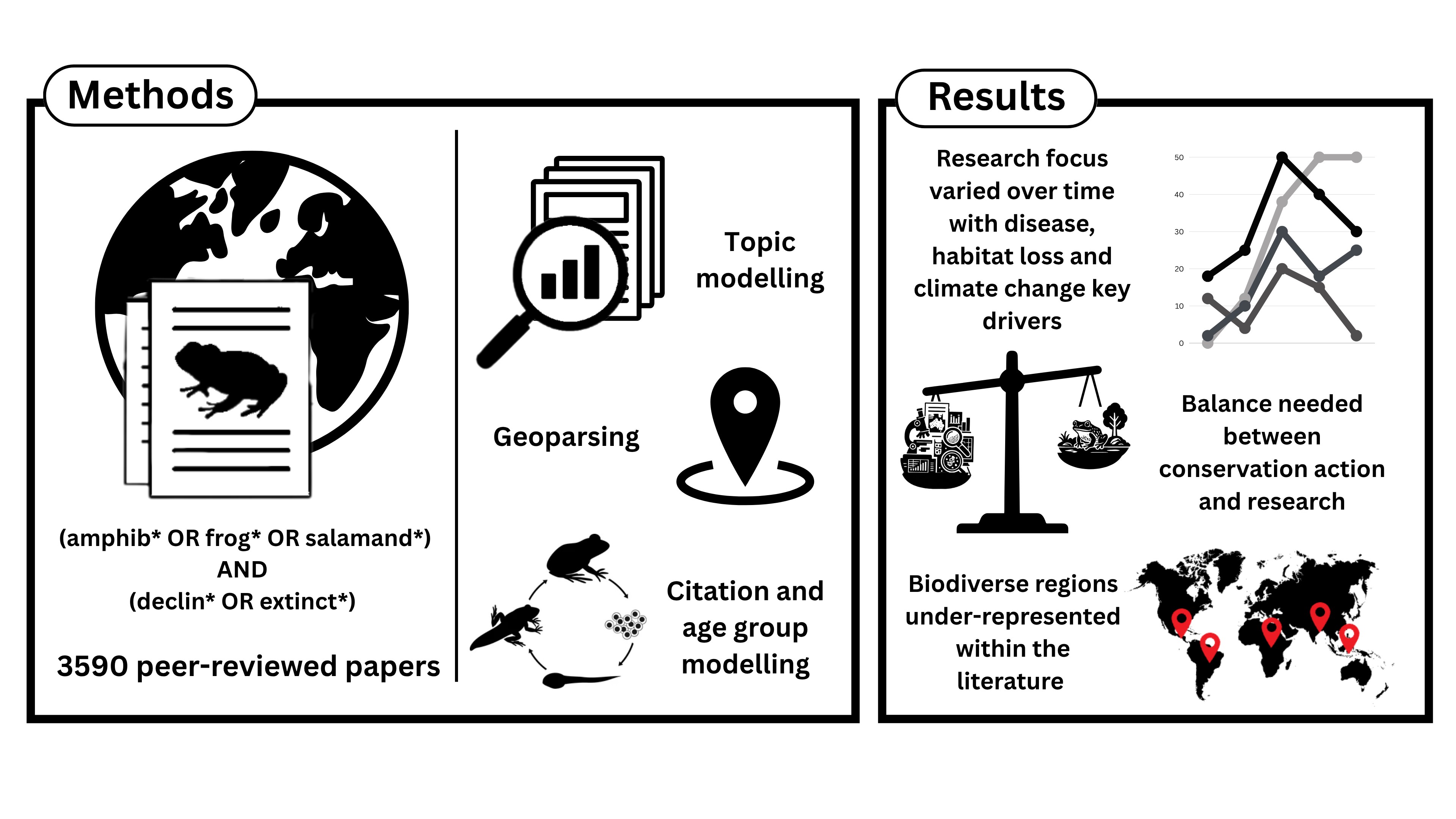Evolution of research on global amphibian declines
https://conbio.onlinelibrary.wiley.com/doi/pdf/10.1111/cobi.70146
Abstract/Summary
In the late 1980s, the scientific community became concerned about severe, enigmatic amphibian declines. These dramatic declines triggered a wave of research focused on quantifying the extent and drivers of declines. We use text-analysis techniques, including topic modelling and geoparsing, to examine the evolution of research focused on amphibian declines. We delineated 15 research topics and tracked spatiotemporal trends from 1985 to 2024, and extracted the number of publications per topic. We uncover a fascinating example of scientific inquiry in action, from the initial recognition and quantification of the phenomenon to identifying drivers and understanding mechanisms of amphibian decline. Early research focused on evaluating the veracity of declines, followed by investigating potential drivers (e.g., UVB radiation, pollution, and habitat fragmentation and loss). After the amphibian chytrid fungus was identified in the late 1990s, research shifted toward disease as a core focus. Subsequently, disease-focused research has become increasingly specialized, with topics focused on susceptibility, resistance/tolerance and mitigation. Most recently, extinction risk and climate change have become increasingly prominent topics, reflecting emerging threats to amphibians. Regions with high amphibian biodiversity and observed declines (e.g., Central and South America) are under-represented in the published literature, with research strongly biased toward Australia, North America, and Europe. We uncovered a clear disconnect between the amphibian decline literature and translation into effective management and conservation actions. To address this gap, we recommend the application of existing knowledge to drive meaningful conservation outcomes, alongside prioritising new research on ongoing and emerging threats.
Publication details
| Published Date: | 2025-07-08 |
| Outlet/Publisher: | Conservation Biology |
| Media Format: |
ARMI Organizational Units:
Rocky Mountains, Southern - BiologyTopics:
ManagementKeywords:
conservationresearch

